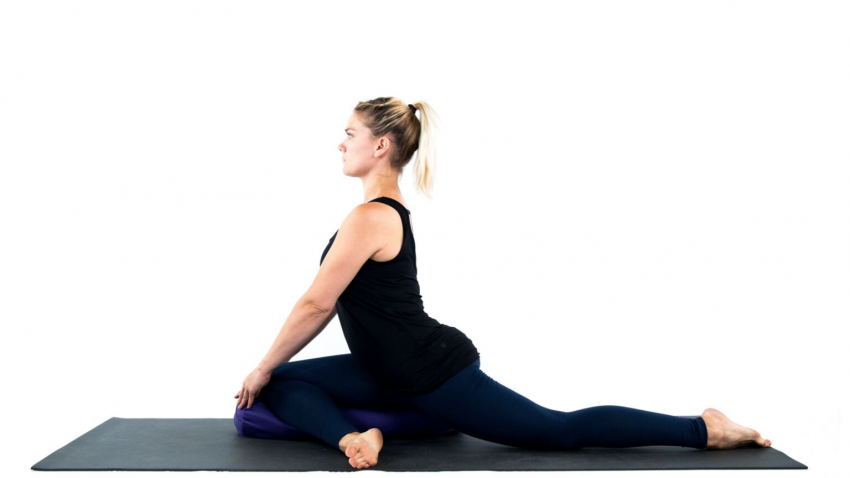The pigeon pose of Eka Pada (Raja) Kapotasana is one of the yoga poses that deal with the hips. A lot of physical activities in our daily lives can make our hips tight which can also affect our mobility. This pose has proven to be a great treatment for sciatic and back pain. The pigeon pose yoga practice targets a couple of muscles which we have categorized into two muscle groups.
- The deep six lateral rotators: These are the piriformis, obturator externus, gemellus superior, quadratus femoris, obturator internus, and gamellus inferio. This muscle group handles the femur’s external rotation.
- The hip flexors: These are the rectus femoris, the iliacus, and psoas. The hip flexors help with the posture which may be negatively affected when the hip flexors become tight.
How To Do The Pigeon Pose
The pigeon pose is such a popular yoga pose that you will find a lot of ways you can practice it. However, this is not to say that all the methods are right and will give the same impacts. To help you create a proper form for this pose, below are the simple steps you can follow to do the pigeon pose.
- Begin in the all-fours position. Let your knee be directly below your hips. Allow your hands to extend a bit forward.
- Push your right knee forward to meet your right hand. As you do that, ensure your right foot is placed before your left knee.
- Push your left leg back as much as you can.
- Make sure your hips are squared on the floor otherwise you will experience unnecessary pressure on your back.
- By now you should be feeling a deep stretch in your right glute. If you do not, extend your right foot forward a little toward the left hand. Extend till your feel the deep stretch.
- Both your right and left thighs should have external and internal rotations respectively, keeping the pressure off the knee cap.
- Then lay your arms firmly on the floor with your spine lengthened. Straighten your head and look forward.
Benefits Of The Pigeon Pose
There are several advantages of pigeon pose. We have compiled a list below.
- Pigeon pose helps stretch the psoas and groins.
- Increases flexibility.
- Stretches the hip flexors.
- It stimulates the internal organs.
- It stretches the glutes, piriformis muscles, and tighs.
- Alleviates sciatic or back pain.
- Improves posture and alignment.
Risks Of The Pigeon Pose
You can explore this yoga pose and have fun with it. However, it would be best to consult your physician or yoga instructor before you start this practice. This will help you determine whether you are fit for this exercise or not. For instance, there are some instances where you should not do the pigeon pose and it is imperative you know. These instances are when you have any of the following injuries.
- An ankle injury
- A back or sacroiliac injury
- Knee injury
- Tight hips
Note that there are variations of the pigeon pose. It is essential that you understand the variant you want to do in order to do it perfectly. In all, the pigeon pose offers a lot of benefits and fun during practice.


